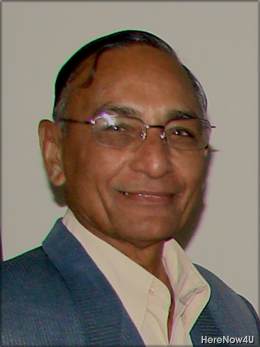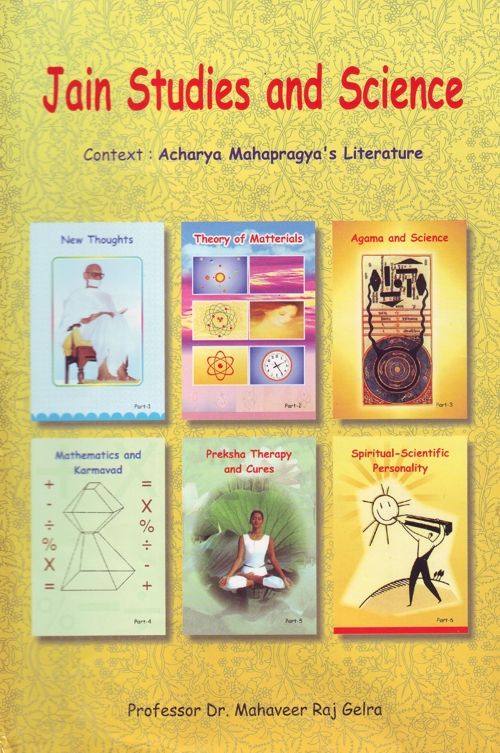The nervous system controls and coordinates the internal body environment as well as monitors external surroundings. Importantly, it is responsible for behaviour, thought and personality. Depending on the nature of activities carried out by different constituents of the nervous system, it is categorized into three parts -
- Central Nervous System (CNS - comprising the brain and spinal cord)
- Peripheral Nervous System (PNS - comprising nerves)
- Autonomic Nervous System (ANS - comprising sympathetic & para sympathetic systems)
Unlike endocrine system which functions by the physical movement of chemicals, the nervous system uses electrical stimuli which act and travel very fast. The basic and functional unit of nervous system is neuron. These neurons are of varied shapes and sizes, but share the same basic structure - a cell body surrounded by cytoplasm, an axon (branch extension) and dendrites (multi-branch extensions).
1. Central Nervous System
The CNS has two interconnected but distinct important parts -
- The Brain
- The Spinal Cord
The brain is the central organ of the nervous system where all information is first collected, processed, analyzed and then decision is made and action is ordered. The cerebrum, cerebellum and the brain stem together make up the brain. An adult brain weighs about 1.5 Kg and consists of more than 12,000 million neurons. The outstanding anatomical feature of cerebrum is very irregular folds called convolutions, the pattern of which varies from person to person.
1.1. Brain Anatomy
The brain is protected within the rigid bony skull. At the base of skull is a hole, through which the spinal cord passes. The brain and spinal cord are further protected by the three covering layers of tissue called meninges. Between the two layers a fluid called cerebro-spinal-fliuid (CSF) is entrapped in such a manner that this fluid bathes the whole surface of the brain and the spinal cord.
The outer part of brain has two cerebral hemispheres, divided by a longitudinal fissure. Its outer layer is called cerebral cortex and it contains gray matter. The inner part is composed of white matter and consists of axons or nerve fibres. It is in the cortex that the areas controlling voluntary movement, the senses, language and vision are found. Areas related to memory and thought are also housed in the cortex. Interestingly, the right hemisphere controls the left side of the body and vice versa. Large parts of cortex are yet to be understood, but various experiments have proved that logic, calculations and language are directed by the left hemisphere whereas, discipline, equanimity, calmness, patience and benevolence are guided by the right hemisphere. Mahapragya has used this fact in his technique of meditation. He has successfully projected the attention on right hemisphere for enhanced spiritual experiences.
The central brain lies between the upper cortex and bottom cerebellum. It is a monolithic section and is connected to the cortex with corpus callosum. It is here that the hypothalamus, pineal and pituitary glands are situated. This section is an important link to our physiological, mental and emotional well being.
The most interior part of the brain contains cerebellum, medulla and pons along with the brainstem. At the upper end of brainstem there are connections with the centres in the cerebellum concerned with consciousness. The lower end of brainstem, called medulla oblongata, is where sensory and motor nerve fibres of the spinal cord cross over.
1.2. Limbic System
In 1878, the French neurologist Paul Broca called attention to the fact that, on the medial surface of the mammalian brain, right underneath the cortex, there exits an area containing several nuclei of gray matter (neurons) which he denominated limbic lobe (from the Latin word 'limbus' that implies the idea of circle, ring, surrounding, etc) since it forms a kind of border around the brain stem.
Emotions and feelings, like wrath, fright, passion, love, hate, joy and sadness, are mammalian attributes, originated in the limbic system. This system is also responsible for some aspects of personal identity and for important functions related to memory.
It consists of several subcortical structures located around the thalamus:
- hippocampus: involved in the formation of long-term memory
- amygdala: involved in aggression and fear
- hypothalamus: controls the autonomic nervous system and regulates ' blood pressure, heart rate, hunger, thirst, sexual arousal and the sleep/wake cycle. Connected to the pituitary gland and thus regulates the endocrine system. (Not all authors regard the hypothalamus as part of limbic system.)
Brain, therefore is the unique and indispensable part of the entire body. A person is declared dead when his brain stops functioning. Our activities - conscious, subconscious, automatic and voluntary, all are solely governed by the brain.
1.3. Spinal CordIt is second most important part of the central nervous system. It extends from the brain stem all the way down to the lower back passing through the vertebral column. It is around 45cm long. Like brain, it is also made up of white and gray matter. Inside white matter are situated ascending and descending fibres. The whole structure of spinal cord is very delicate and its vulnerability is protected by the bony segments of vertebrae and supporting ligaments.
Spinal cord actually works as the two way highway between the brain and the body parts. One lane carries the stimulus information to the brain while the other lane brings down the action commands to various target muscles. In other words, it is an interface between the CNS and PNS.
2. Peripheral Nervous System (PNS)Our brain has developed an ingenious way to perform all body activities with the help of receptor and effector neuron mechanism. All the limbs and senses are connected to the brain by the peripheral nervous system. PNS is subdivided into -
- Sensory - Somatic Nervous System
- Autonomic - Motor Nervous System
All our conscious awareness of the external environment and all our motor activities to cope with it, operate through the sensory-somatic division of the PNS. Nerves contained in this system are further divided into two main types -
- Cranial Nerves
- Spinal Nerves
Twelve pairs of cranial nerves run to and from the brain and branch out to the muscles and senses of head, face, neck and chest. They participate in eyeball movement, tongue, swallowing, hearing and balance etc.
In addition, thirty one pairs of spinal nerves originate and ramify from the spine to reach every part of the body. One part of these nerve pairs is called motor root and another sensory root. The motor root innervates muscles to produce movement, whereas the sensory root gathers information from the peripheral receptors like skin, joints, etc. and transmits it to the brain.
2.1. Autonomic Nervous System (ANS)
All our spontaneous internal body mechanisms like, digestion, heart-beat, hormone secretion etc. are governed by ANS. The part of brain - hypothalamus has shouldered this responsibility. From here the information passes through spinal cord via the brain stem.
The actions of the autonomic nervous system are largely involuntary (in contrast to those of the sensory-somatic system). It also differs from the sensory-somatic system in using two groups of motor neurons to stimulate the effectors instead of one.
The first, the preganglionic neurons, arise in the CNS and run to a ganglion in the body where they synapse with postganglionic neurons, which run to the effector organ (a muscle or a gland).
The autonomic nervous system has two subdivisions -
- Sympathetic nervous system
- Parasympathetic nervous system.
2.1.1. The Sympathetic Nervous System
The preganglionic motor neurons of the sympathetic system arise in the spinal cord. They pass into sympathetic ganglia which are organized into two chains that run parallel to and on either side of the spinal cord.
The neurotransmitter of the preganglionic sympathetic neurons is acetylcholine (ACh). It stimulates action in the postganglionic neurons which in turn release noradrenalin. The action of noradrenaline on a particular gland or muscle is excitatory is some cases and inhibitory in others. The release of noradrenalin has following effects-
- increases heartbeat
- raises blood pressure
- dilates the pupils
- dilates the trachea and bronchi
- stimulates the conversion of liver glycogen into glucose
- shunts blood away from the skin and viscera to the skeletal muscles, brain, and heart
- inhibits peristalsis in the gastrointestinal (GI) tract
- inhibits contraction of the bladder and rectum
Stimulation of the sympathetic branch of the autonomic nervous system prepares the body for emergencies in such a manner that the body is prepared to either take a suitable offensive or defensive measure as the situation warrants.
2.1.2. The Parasympathetic Nervous SystemThe main nerves of the parasympathetic system are the tenth cranial nerves, the vagus nerves. They originate in the medulla oblongata. Other preganglionic parasympathetic neurons also extend from the brain as well as from the lower tip of the spinal cord.
Acetylcholine (ACh) is the neurotransmitter of most pre- and postganglionic neurons. Parasympathetic stimulation causes following effects-
- slowing down of the heartbeat
- lowering of blood pressure
- constriction of the pupils
- increased blood flow to the skin
- peristalsis of the GI tract
The parasympathetic system, therefore, returns the body functions to normal after they have been altered by sympathetic stimulation. In times of danger, the sympathetic system prepares the body for violent activity. The parasympathetic system reverses these changes when the danger is over.
Although the autonomic nervous system is considered to be involuntary, this is not entirely true. A certain amount of conscious control can be exerted over it as has long been demonstrated by practitioners of Jain meditation, Yoga and Zen Buddhism. During their periods of meditation, these people are clearly able to alter a number of autonomic functions including heart rate and the rate of oxygen consumption. These changes induced by the meditation are not simple reflections of decreased physical activity because they exceed the amount of change occurring during sleep or hypnosis.
 Dr. Mahavir Raj Gelra
Dr. Mahavir Raj Gelra

